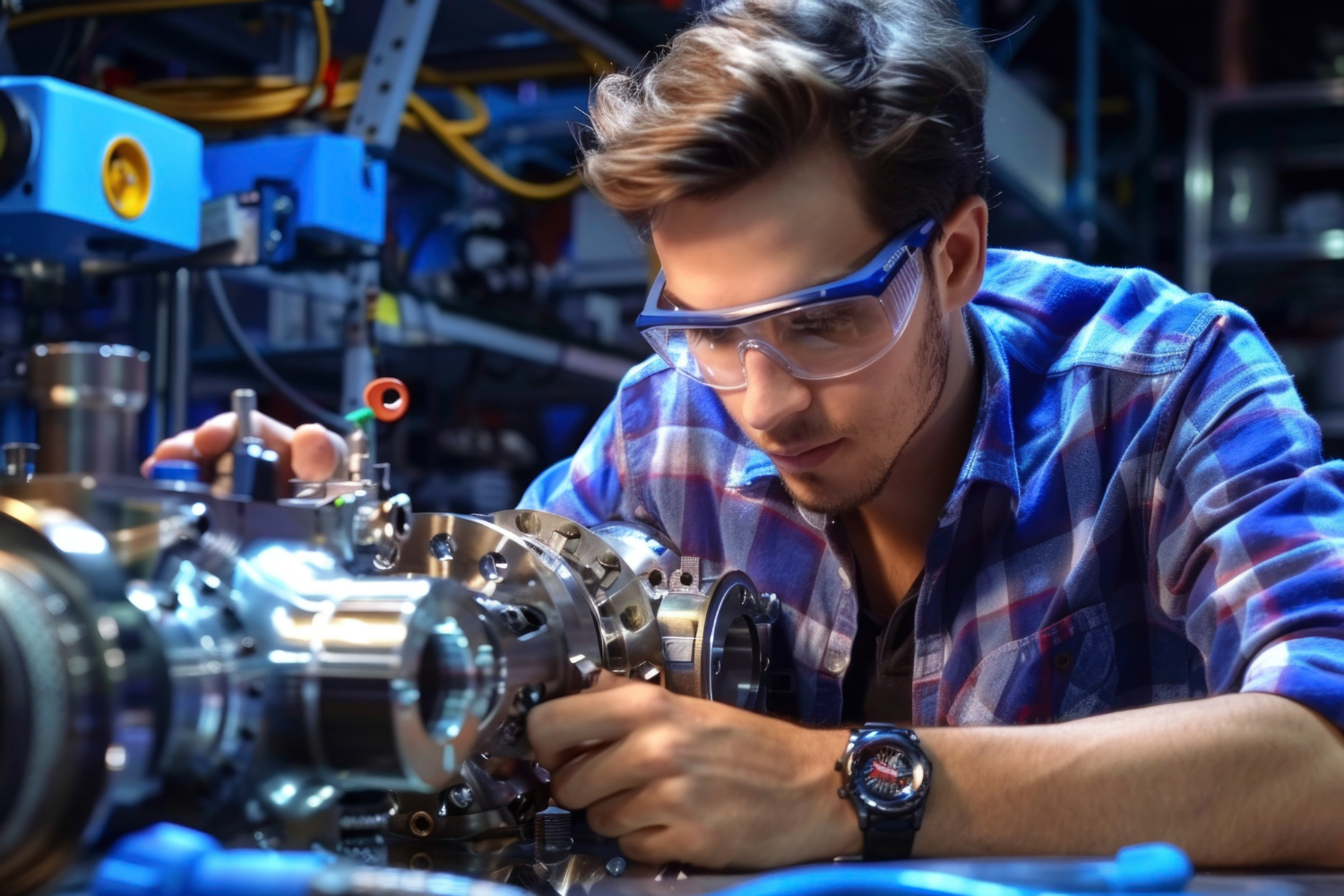Mechatronics is a multidisciplinary field that combines mechanical engineering, electrical engineering, computer science, and control engineering to design and create intelligent systems. As technology continues to advance, mechatronics has become a driving force behind the development of sophisticated systems in various industries. From robotics to automation and smart devices, mechatronics is present in many aspects of our modern lives. This article explores the key applications of mechatronics and how it has revolutionized various sectors.

What is Mechatronics?
Mechatronics is the integration of mechanical, electronic, and computer systems to design more efficient and intelligent machines. The term “mechatronics” originated from the fusion of “mechanical” and “electronics,” but today, it encompasses a wide array of technologies, including automation, robotics, sensors, actuators, and embedded systems. The field is constantly evolving, and it plays a pivotal role in industries like automotive, healthcare, manufacturing, aerospace, and consumer electronics.
Key Applications of Mechatronics in the Modern World
1. Robotics and Automation
One of the most prominent applications of mechatronics is in the field of robotics. Robotic systems are designed to perform tasks autonomously, often in environments that are too dangerous, complex, or repetitive for humans. Mechatronics enables robots to have the necessary control systems, sensors, and actuators to interact with their surroundings and execute specific tasks. For example, industrial robots are used in manufacturing processes to handle materials, assemble parts, and package products. These robots significantly improve efficiency and precision while reducing human labor.
Additionally, automation in factories, warehouses, and even homes has been made possible through mechatronics. Automated systems can perform repetitive tasks more quickly and accurately, which leads to cost savings and increased productivity. The rise of smart homes and smart factories are clear examples of how mechatronics is transforming everyday life.
2. Healthcare and Medical Devices
In healthcare, mechatronics has played a critical role in the development of advanced medical devices that have improved patient care. Medical robotics, such as robotic surgery systems, enable surgeons to perform highly precise operations with minimal invasiveness. These robots, powered by mechatronics technologies, are equipped with sensors, actuators, and cameras that allow for enhanced visualization and control, leading to faster recovery times and reduced risks.
Another example is prosthetics and exoskeletons, which use mechatronics to provide mobility and support to individuals with disabilities. These devices are often equipped with sensors and actuators that mimic natural limb movement, allowing users to regain independence and quality of life.
3. Automotive Industry
The automotive industry has also greatly benefited from mechatronics. Modern vehicles rely heavily on mechatronic systems to enhance performance, safety, and convenience. For instance, anti-lock braking systems (ABS), airbag systems, and electronic stability control (ESC) all utilize mechatronics to function effectively.
In addition to safety systems, mechatronics is also used in electric and hybrid vehicles. These vehicles employ complex mechatronic systems that control energy flow, battery management, and regenerative braking to maximize efficiency and reduce environmental impact.
Moreover, autonomous vehicles are another significant area where mechatronics is making strides. Self-driving cars rely on sensors, cameras, control systems, and artificial intelligence—all of which are fundamental components of mechatronics—to navigate and make decisions in real-time.
4. Consumer Electronics
Consumer electronics are another sector where mechatronics plays an essential role. Smart devices like smartphones, tablets, and wearable technologies all rely on mechatronics to provide users with advanced features. For example, the touchscreens of smartphones, the heart rate sensors in smartwatches, and the cameras in modern mobile devices are all powered by mechatronic systems that integrate mechanical components, electronics, and software.
Mechatronics has also contributed to the development of smart home devices such as voice-controlled assistants, smart thermostats, and automated security systems. These devices are designed to make everyday life more convenient, secure, and energy-efficient.
5. Aerospace and Defense
In aerospace, mechatronics is used in aircraft systems, satellite technology, and space exploration. Autonomous drones, for example, rely on mechatronic systems to fly autonomously, capture data, and even deliver packages in some cases. These drones use a combination of sensors, actuators, and computer control systems to navigate through the air and perform specific tasks.
In defense, mechatronics plays a critical role in the development of advanced weapons systems, surveillance technologies, and unmanned vehicles. These systems are designed to perform high-risk missions, such as reconnaissance, bomb disposal, and combat, in dangerous environments where human presence is limited or impractical.
6. Manufacturing and Industrial Systems
In the manufacturing sector, mechatronics is used to design automated production lines, CNC machines, and additive manufacturing (3D printing) systems. These systems use a combination of mechanical, electronic, and control systems to perform tasks like cutting, assembling, and printing with high precision.
The integration of mechatronics in manufacturing allows for greater flexibility, precision, and efficiency in the production process. Advanced robots, machine learning algorithms, and sensors help optimize production, reduce downtime, and improve product quality.
Conclusion
As demonstrated, mechatronics plays an integral role in many industries, from robotics and healthcare to automotive and aerospace. Its ability to integrate mechanical, electrical, and computing systems allows for the creation of highly advanced and efficient systems that improve our daily lives and increase productivity in various sectors.
If you are interested in exploring the world of mechatronics and how it can enhance your business operations, you can trust HDE to provide innovative solutions and cutting-edge technologies tailored to your needs. With our expertise and experience, we help our clients stay ahead in this rapidly evolving technological landscape.



